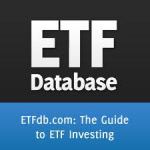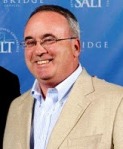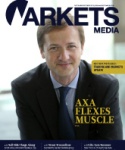AdvisorShares, a leading sponsor of 17 actively managed exchange-traded funds (ETFs), announced today that the AdvisorShares Peritus High Yield ETF (NYSE Arca: HYLD), the first high yield actively-managed ETF has met listing requirements of the Chicago Board Options Exchange® (CBOE®) and that HYLD options are now listed for trading on the CBOE.
Actively-Managed ETFs Poised to Proliferate in 2013 (?)
Courtesy of WSJ Dec 28 Weekend Edition and reporter Joe Light
The world of ETFs is about to get pumped up.
A long-heralded blossoming of actively managed exchange-traded funds is one step closer, now that the Securities and Exchange C ommission earlier this month removed a hurdle that discouraged money managers from releasing such products.
ommission earlier this month removed a hurdle that discouraged money managers from releasing such products.
For small investors, the change could mean more choices. But it also could cause money managers to add more risk to their portfolios as previously forbidden investment strategies become available, analysts say.
In March 2010, the SEC stopped approving new actively managed ETFs that use derivatives, which are contracts that derive their value from that of underlying securities, such as options and credit-default swaps. Portfolio managers use derivatives frequently in actively managed mutual funds to protect against the threat of bond defaults, currency fluctuations and other risks. The ban discouraged fund companies from starting actively managed ETFs. Instead, the vast majority of ETFs are low-fee index funds, which passively track an established benchmark.
Earlier this month, Norm Champ, director of the SEC division of investment management, said in a speech that the agency now will approve the use of derivatives in ETFs under certain conditions.
Continue reading
ETFs for IPOs; First Trust’s FPX Scores Big Gains in 2012
Courtesy of WSJ’s Chris Dieterich
The sprawling reach of exchange-traded funds has so far left initial public offerings virtually untouched, but the performance of the sole fund to focus on new stocks has proven worthy of investors’ attention – and could well encourage imitators.

The pioneering fund, First Trust US IPO Index ETF, tracks an index of 100 US IPOs and spin-offs developed by Josef Schuster, founder of IPOX Schuster LLC, an IPO research and investment firm based in Chicago. It climbed to an all-time high earlier in December, and has risen 26% in 2012 through Friday, towering over a 12% gain for the Standard & Poor’s 500. Over three years, the fund has returned 16% on an annualised basis, topping 10% for the S&P 500.
The fund’s year-to-date return is markedly better than if an investor was able to buy every IPO in the US this year at the offer price and hold it, a strategy that would have notched a 17% return through Friday, according to Renaissance Capital, an IPO research and investment firm.
The methodologies underpinning IPOX Schuster’s suite of indexes are, essentially, to focus on the biggest, brightest stars, skip the noise of first-day jumps or nosedives, and let the companies put their newly raised cash to work for a few years.
Data have shown the market performance of IPOs tends to trail shares of publicly traded companies with the same size by market capitalisation. In an April analysis, Jay Ritter, a finance professor at the University of Florida, found between 1970 and 2010, IPOs trailed peers by an average of 3.3% during five years after issuing shares, excluding the first-day gain.
But Schuster has found much of the lagging performance comes from a large chunk of small- and middle-capitalisation companies. “A few do extremely well, and the rest really underperform,” he said.
The fund is selective, only buys after a given stock has been trading for at least a week and then holds on to shares for several years. Many of its top holdings, which include spin-offs like Phillips 66 – up more than 50% since trading began in May – hardly resemble cash-hungry startups. Among the fund’s largest positions for most of the year: Visa, which went public in 2008, and General Motors, which went public in 2010 after the federal government bailed out the auto maker a year earlier. Visa, which this month was dropped from the fund after more than four years, has gained 46% this year, while General Motors added 37%.
Big holdings also include the likes of Facebook, which commands nearly 10% of the weight. Schuster added Facebook in late September, according to Morningstar, when shares prices hovered at roughly half of their May offer price. Shares have since climbed 20%.
ICE-NYSE Deal: Derivatives Exchange CEO Gets Icey Response From Some Sell-Side Stock Jocks
Within the first several days since the December 20 proposed merger announcement between NYSE Euronext and IntercontinentalExchange (ICE), there has been no shortage of public responses, comments and of course, a lawsuit opposing the deal (filed last Friday by the New Jersey Carpenters Pension Fund).
 For those following this deal, today’s WSJ column by Jason Bunge profiles the mindset of ICE CEO Jeffrey Sprecher, and it speaks volumes. It also raises concerns on the part of Wall Street’s biggest firms, who, along with exchanges, reap tens of millions of dollars in fees that more than a few consider to be wrought with conflict, and are necessarily loathe to put the genie back in the bottle.
For those following this deal, today’s WSJ column by Jason Bunge profiles the mindset of ICE CEO Jeffrey Sprecher, and it speaks volumes. It also raises concerns on the part of Wall Street’s biggest firms, who, along with exchanges, reap tens of millions of dollars in fees that more than a few consider to be wrought with conflict, and are necessarily loathe to put the genie back in the bottle.
Here are some poignant extracts from today’s WSJ piece:
The chief executive and chairman of IntercontinentalExchange Inc., which last week unveiled plans to buy NYSE Euronext NYX +0.32% for $8.2 billion, isn’t steeped in the business of equities trading. But he has plenty to say about it, including some views that challenge the prevailing wisdom and business models of many securities-trading firms.
The 57-year-old, who started IntercontinentalExchange 12 years ago after a career in the electric-power industry, opposes paying incentives to lure big traders onto stock exchanges, a widespread practice that exchange officials say is necessary to keep their markets in motion. Mr. Sprecher also objects to the dispersion of stock trading across scores of exchanges and private markets, a trend embraced by banks and trading firms that earn profits by trading shares away from exchanges.
Mr. Sprecher also has criticized the common practice by the NYSE and other U.S. stock exchanges of paying incentives to traders that are active buyers and sellers of securities. The exchanges say they pay such rebates to help ensure that there are traders to take the other side of orders placed by mutual funds or individual investors.
Paying these incentives has fostered a system that encourages some traders to heavily buy and sell without much concern for holding a given stock—making such traders more likely to abandon markets when conditions turn volatile, Mr. Sprecher said in Chicago last year.
Some industry executives are skeptical that Mr. Sprecher could change the practice, known as “maker-taker” pricing, even with the clout of the Big Board at his disposal. Doing away with it could require changes to many firms’ trading strategies, and an exchange could lose business as some customers shift to rival markets that still pay incentives.
Some of Mr. Sprecher’s views are consistent with those of the Big Board. Like NYSE executives, Mr. Sprecher has criticized the diffusion of stock-trading activity across scores of exchanges, brokerages and private “dark pool” markets, warning that the trend has damaged investor confidence in stock investing and played into catastrophes such as the “flash crash” of May 2010.
Traders say that the stock market is more convoluted and interconnected than the futures trading world Mr. Sprecher is used to, thanks largely to rule changes designed to boost competition among stock exchanges and brokers.
“The NYSE is a much different world, and it’s much more difficult to get any market-structure change done,” said Neil Catania, chief executive of MND Partners Inc., a brokerage firm on the floor of the NYSE. “But we need new thinking.”
The full article is available to WSJ online subscribers by clicking here
Copper ETF Approved Over Hedge Fund’s Objections | FINalternatives
Commodities hedge fund RK Capital Management has lost its bid to stop a copper exchange-traded fund that it warned could “wreak havoc on the U.S. and global economy.”
The Securities and Exchange Commission last week approved a rule change at NYSE Arca that will allow the launch of a physical copper ETF. That fund will be launched by JPMorgan Chase, but is expected to be followed by two others, from BlackRock and ETF Securities.
Read the full story at FinAlternatives
Copper ETF Approved Over Hedge Fund’s Objections | FINalternatives.
ETF New Rules: SEC Says Derivatives for Actively-Managed ETFs…
 Courtesy of Daniela Pylypczak Back in March of 2010, the SEC began a review of the use of derivatives by ETFs, specifically actively-managed and leveraged funds. Norm Champ, Director of the SEC’s Division of Investment Management, stated that “The use and complexity of derivatives have grown significantly over the past two decades and have given rise to many interpretive and policy issues under the 1940 Act.”
Courtesy of Daniela Pylypczak Back in March of 2010, the SEC began a review of the use of derivatives by ETFs, specifically actively-managed and leveraged funds. Norm Champ, Director of the SEC’s Division of Investment Management, stated that “The use and complexity of derivatives have grown significantly over the past two decades and have given rise to many interpretive and policy issues under the 1940 Act.”
But after over two years of analysis and review, the SEC finally made its decision last week: fund companies are now able to seek regulatory permission to include derivatives in actively-managed ETFs. There are, however, explicit stipulations that fund managers must adhere to [see also Actively-Managed ETFdb Portfolio  ]:
]:
- The ETF’s board must periodically review and approve the ETF’s use of derivatives and how the ETF’s investment advisor assesses and manages risk with respect to the ETF’s use of derivatives.
- The ETF’s disclosure of its use of derivatives in its offering documents and periodic reports is consistent with relevant Commission and staff guidance.
The SEC stressed that it will continuously review this issue, but in regards to decisions concerning the use of derivatives by leveraged exchange-traded funds, they are still hesitant to grant permission. Champ expressed his concern over these powerful products, stating that “Because of concerns regarding leveraged ETFs, however, we continue not to support exemptive relief for such ETFs.”
What Does This Mean For ETF Investors?
Derivative use has been a touchy subject for many investors, as these powerful instruments have led to some of the worst financial disasters of all time. On the other hand, they have also provided lucrative opportunities for those with the knowledge and in-depth understanding of how exactly these products work. But will using derivatives in actively-managed ETFs do more good or harm for investors? Unfortunately, the most reasonable answer is that only time will tell. Below we outline the top five actively-managed funds that investors may want to keep a close eye on [filter by active/passive and other fields with the free ETF Screener]:
| Ticker | ETF | Expense Ratio | AUM |
|---|---|---|---|
| BOND | Total Return Exchange-Traded Fund | 0.55% | $3.9 billion |
| MINT | Enhanced Short Maturity Strategy Fund | 0.35% | $2.1 billion |
| ELD | Emerging Markets Local Debt Fund | 0.55% | $1.5 billion |
| ALD | Asia Local Debt Fund | 0.55% | $462 million |
| CEW | Dreyfus Emerging Currency Fund | 0.55% | $276 million |
| *As of 12/13/2012 | |||
[For more ETF analysis, make sure to sign up for our free ETF newsletter or try a free seven day trial to ETFdb P
Dennis Gartman is a Raging Bull..
![]()
Courtesy of Olly Ludwig at IndexUniverse.com
Dennis Gartman is about as raging a bull as you can find these days. At a time when many investors remain beaten down in the volatile “risk-on/risk-off” aftermath of the crash of 2008, and uncertain about how high taxes will go in 2013, the editor of The Gartman Letter looks at rising crude and natural gas production in the U.S. and sees the makings of the most promising economic circumstances in a long time.
Gartman told IndexUniverse.com Managing Editor Olly Ludwig that he’s not exactly pleased about President Obama’s re-election, but that doesn’t mean he’s wallowing in pessimism about the goings on in Washington, D.C. He reckons that while it may take time and great effort, Democrats and Republicans will do the right thing and cut spending, even as the “leftist” president goes ahead and raises taxes on the wealthiest Americans.
In all his optimism, Gartman is also bullish on gold, but not in the way you might expect. He’s not buying gold because he thinks the economy is going to the dogs and that the Federal Reserve is unhinged. Rather, he says that Ben Bernanke’s Fed is doing a fine job, and that investors should buy gold with a weakening Japanese yen. What’s more, Gartman even has his name on a quartet of funds now in registration that will allow investors to own gold in yen, British pounds and euros.
Ludwig: Could gold end lower this year?
Gartman: No. It ended last year at $1,566 an ounce. The odds of it closing unchanged on the year, I think, are zero.
Ludwig: I ask because you don’t see gold going through the roof these days, in spite of what the Fed is doing to keep bond yields so low. It has been falling and is now around $1,700.
Gartman: Well, the Fed is buying $40 billion to $45 billion worth of securities every month, but we forget that they’re also allowing about $35 billion to $40 billion—if not more—to mature off on the back end. So the monetary base has actually not grown at all in the course of the last year.
Ludwig: So what is your general overview of how the Fed is performing?
Gartman: I think the Fed has done yeomen’s work since the autumn of 2008. Publicly, they’re very clear about buying securities on a regular basis; privately, they’re circumspect and quiet about allowing them to mature off. I think they have expanded all that they’ve wanted to. And I think they have done the right thing heretofore. Continue reading
Trading Market Pros Do a 360; Looking Back and Forward 5 Yrs
Extracts courtesy of a special year-end story from Terry Flanagan at MarketsMedia
The Standard & Poor’s 500 Index stood at 1,380 in mid-November, down about 5% from 1,450 five years earlier. To a visitor from Mars, the similarity of the numbers could suggest that it was a quiet period for financial-market participants.
But in reality, it has been the opposite, as the past five years has been perhaps the most tumultuous half-decade period in the history of global markets.
The fragile, end-of-rally market of late 2007 gave way to a full-blown financial crisis by September 2008, the nadir of which which lasted into 2009. Massive interventions on the part of governments worldwide staved off a doomsday scenario, setting the stage for some stabilization and a market rebound in 2009-2010. But the recovery has yet to sustain itself, and 2011 and 2012 have proved largely disappointing.
“The past five years will likely be viewed as a landmark period of timeless case studies within the history of financial markets,” said Karim Taleb, principal of investment manager Robust Methods.
“For institutional trading this was one of the most challenging market environments that I have witnessed in my career,” said Steve Hedger, head of equity trading at Fifth Third Asset Management. “Lack of liquidity, extreme volatility, and a disappearance of several venerable brokerage firms made seasoned traders earn their keep.”
The challenges for institutional traders such as Hedger revolve around liquidity sourcing-that is, finding sellers for buy orders and buyers for sell orders. Aside from the demise of Lehman Brothers and Bear Stearns, other liquidity sappers include tightening regulation of Wall Street, which has prompted surviving big banks such as Goldman Sachs and Morgan Stanley to pull in their trading horns, and a more general malaise and mistrust among buy-side investors, both retail and institutional.

Aside from regulation, the most noteworthy topics from a broker-dealer perspective are the evolution and impact of trading technology and the exponential growth of institutions using both exchange-traded-products and option-centric hedging tools, according to Michael Wallach, chief executive of agency-only broker-dealer WallachBeth Capital.
Even with the proliferation of electronic trading, it has its limitations, and voice and floor will continue to offer liquidity, at least for some trades. “What hasn’t changed is the fact that trading screens remain notoriously one-dimensional despite the three-dimensional nature of financial markets,” Wallach said.
Additionally, market disruptions, geopolitically driven volatility spikes, and diminished investor confidence have sharpened focus on broker-dealers’ fiduciary obligations, Wallach said.
“What has struck me over the past five years is the level of innovation that we have seen in the market,” said John Kelly, chief operating officer at Liquidnet. “This has provided the means for investors to seek out growth, yield, diversity, or safety to a degree that was never before achievable.”
One market veteran’s perspective trumped the CNBC survey by a factor of five. “We enter the next five years with a significantly higher degree of uncertainty than any time I can recall in more than 30 years,” said Kelly of Liquidnet.
For the entire article (its a great read!) please visit MarketsMedia online platform
This ETF Could be The Real Monetary Easing Play: Benzinga
 While the market seemed generally unimpressed by the Federal Reserve’s pledge to hold interest rates down until the U.S. unemployment rate drops below 6.5 percent, the usual suspects among ETFs performed as expected Wednesday.
While the market seemed generally unimpressed by the Federal Reserve’s pledge to hold interest rates down until the U.S. unemployment rate drops below 6.5 percent, the usual suspects among ETFs performed as expected Wednesday.
Following the conclusion of the central bank’s last monetary policy meeting of 2012, the PowerShares DB US Dollar Index Bullish (NYSE: UUP ), the ETF equivalent of the U.S. Dollar Index, fell almost 0.2 percent on above average turnover. The SPDR Gold Shares (NYSE: GLD ) and the iShares Gold Trust (NYSE: IAU ) closed slightly higher. The iShares Silver Trust (NYSE: SLV ) impressed with a gain of 1.4 percent on strong volume.
There is another near-term option for traders looking to take advantage of monetary easing and it arguably has nothing to do with the Fed. Emphasis on “near-term,” but it is worth noting the ProShares UltraShort Yen (NYSE: YCS ) surged 1.5 percent on volume that was better than triple the daily average on Wednesday.
In the process, the ProShares UltraShort Yen broke through resistance in the $46 area to close at $46.72. That is the highest closing print for YCS since April.
The utility of YCS, which in the words of its issuer “seeks daily investment results, before fees and expenses, that correspond to two times the inverse (-2x) of the daily performance of the U.S. Dollar price of the yen,” is clear.
Japan, the world’s third-largest economy, is scheduled to hold elections on Sunday December![]() 16. Given recent price action in YCS, it would appear forex traders are pricing in victory for Shinzo Abe in his quest to become prime minister again and for Abe’s Liberal Democratic Party.
16. Given recent price action in YCS, it would appear forex traders are pricing in victory for Shinzo Abe in his quest to become prime minister again and for Abe’s Liberal Democratic Party.
Should Abe emerge victorious, the yen will likely plummet because Abe has been vocal in his desire to weaken his country’s currency. In fact, Abe is a dream come true for quantitative easing addicts because he has called on the Bank of Japan to engage in unlimited easing .
Recent polls suggest Abe will win and that Japan’s ruling Democratic party will suffer significant losses. That is good news for YCS.
Proper trading of YCS revolves around remembering two key points. First, YCS is a leveraged ETF just like the more widely known Direxion Daily Financial![]() 3X Bear Shares (NYSE: FAZ ) or the ProShares UltraShort S&P500 (NYSE: SDS ). That means YCS is best used as a short-term instrument not a long-term investment
3X Bear Shares (NYSE: FAZ ) or the ProShares UltraShort S&P500 (NYSE: SDS ). That means YCS is best used as a short-term instrument not a long-term investment![]() .
.
Second, the yen has a penchant for short-term declines when the Bank of Japan intervenes in the currency market or when rhetoric, such as Abe’s, is favorable. However, the Japanese currency has been strong in recent years. YCS has a plain vanilla counterpart, the CurrencyShares Japanese Yen Trust (NYSE: FXY ). FXY’s daily chart is a train wreck, but over the life of that ETF, it has surged 40.5 percent.
For the complete article courtesy of Benzinga.com & NASDAQ, please click here
Institutional Investor: Vanguard’s Risky Switch in ETF Indexes
![]() Courtesy of Rosalyn Retkwa
Courtesy of Rosalyn Retkwa
When it comes to the broad-based emerging-markets equity ETFs, Vanguard’s MSCI Emerging Markets ETF (VWO) is clearly the top dog. As of December 11, VWO had a market cap of $58.66 billion and an average daily volume of 17.74 million shares.
But back on October 2, Vanguard rocked the ETF world when it said it would drop MSCI of New York City as its index provider on 22 ETFs and substitute two other index providers, in the belief that by doing so, it could achieve “considerable savings for the funds’ shareholders over time.” That includes VWO, which will transition to a FTSE index at some unspecified point next year. Vanguard has been deliberately vague about any sort of schedule.
“We’re not saying exactly when the transitions will begin in order to prevent front-running,” says Joel Dickson, a senior investment strategist and principal in Vanguard’s Investment Strategy Group in Malvern, Pennsylvania. “The transitions will be staggered over several months,” he says, noting that VWO “will take longer than the other funds because it will be divesting all of its holdings in South Korea and investing the proceeds in some markets that are less liquid.”
And VWO’s exposure to South Korea is the problem. As of its latest statement on October 31, VWO had a 15.3 percent weighting in South Korea, including its No. 1 stock holding, Samsung Electronics. And that entire position will have to be eliminated when VWO moves from the MSCI index to the FTSE index.
Among index providers, there’s a vigorous debate as to whether South Korea should be classified as emerging or developed, and while MSCI still considers it to be emerging because of stock market and currency constraints, FTSE upgraded it to the developed-nation status in September of 2008, and implemented the change a year later, says Jonathan Horton, the New York City–based president of FTSE North America and head of its exchange-traded product unit. There’s also a budding price war among ETF sponsors.

Still, the change in benchmarks is “a headache” for some institutional investors, says Dong Lee, the director of institutional sales at New York City’s WallachBeth Capital. It often means they “have to present the investment case for the switch in indices in order to obtain board approval; and there’s a lot of work involved in that,” he says.
But will institutional investors switch to that other big dog of the category, BlackRock’s iShares MSCI Emerging Markets Index Fund (EEM), and in the process pay a much higher expense ratio of 67 basis points versus VWO’s 20 basis points to stick with MSCI? Continue reading
When European ETF Execution Becomes a Stand-Out Factor, PM’s Step Out Orders
![]() courtesy of DowJones’ Peter Davy
courtesy of DowJones’ Peter Davy
Dec 10 2012
Exchange-traded funds may be seen as a low-cost investment option but the huge choice of how to trade these products can have expensive consequences for institutional investors.
“It can have a very significant impact. Get a bad execution and you start with a drag on the performance,” said Deborah Fuhr, partner at ETFGI, the research and consulting firm.
In Europe, unlike the US, only a minority of ETF trading is done on stock exchanges. About 70% of ETF trading takes place over the counter, off-exchange, according to ETFGI. That may mean going to an “authorised participant” that is registered to allow it to create or redeem shares of the ETF with the product provider, or simply buying or selling the ETFs without going through the exchange.
For smaller trades and big ETFs tracking a major index, such as the FTSE 100, that may not be necessary. There an investor may trade up to £3m on exchange with few problems. For the bigger trades undertaken by institutional investors and for more esoteric ETFs such as those based on emerging markets or commodity indices, trading on exchange is likely to affect the price (since ETFs on exchange can trade at a discount or premium to the value of the underlying assets they track), requiring them to look elsewhere to avoid doing so, or just to get a better price than available on the exchange.
Thorsten Winkler, co-founder at Frankfurt-based Advanced Asset Management, which manages ETF funds of funds, said it is natural to turn to the investment banks linked to ETFs when looking to trade those products. He said: “You would think they should be able to provide the best execution of their own product.”
In other circumstances, such as trading an iShares ETF, for example, since BlackRock doesn’t have a broking arm, many investors instead turn to specialist marketmakers, committed to providing continual prices to buy and sell ETFs, such as Flow Traders, Susquehanna and Knight Capital.
At Evercore Pan Asset, another fund manager constructing portfolios of ETFs, co-founder Christopher Aldous is keen on WallachBeth, the US institutional broker that entered the European market earlier this year in a joint venture with North Square Blue Oak. It does no principal trading – in which the broker takes ownership of the ETF – but works purely on commission to try to find the best price for clients from marketmakers and other liquidity providers. Aldous said: “For us it is like outsourcing our ETFs sales trading service.”
Laurie Pinto, North Square Blue Oak chief executive, argues that using agency brokers is the only way investors can be sure they are getting the best price. He said: “How can you trade with a marketmaker knowing he is making money out of trading with you – not taking a commission and getting the best price but making money out of the trade? They make their entire living trading against you.”
However, the marketmakers counter that agency brokers have to deal with them. Matthew Holden, managing director and head of ETF trading for Europe at Knight Capital, said: “Agency order aggregators cannot exist without marketmakers.”
For the full article courtesy of FinancialNews, please click here (subscription required)
Market Contrarian Matt Gohd Joins WallachBeth Capital; Option Strategist to Hedge Funds Adds Further Dimension for Boutique Brokerage
 December 3, New York, NY—WallachBeth Capital LLC (“WB”), the institutional agency broker specializing in options and Exchange-Traded-Fund (ETFs), announced the hiring of Matt Gohd, the trading market strategist whose contrarian market calls have been widely-followed for two decades by leading hedge fund managers and industry observers. Mr. Gohd, a 30-year industry veteran joins WallachBeth as Senior Managing Director/Option Strategy.
December 3, New York, NY—WallachBeth Capital LLC (“WB”), the institutional agency broker specializing in options and Exchange-Traded-Fund (ETFs), announced the hiring of Matt Gohd, the trading market strategist whose contrarian market calls have been widely-followed for two decades by leading hedge fund managers and industry observers. Mr. Gohd, a 30-year industry veteran joins WallachBeth as Senior Managing Director/Option Strategy.
According to WallachBeth CEO, Michael Wallach, “Our firm’s platform is based on providing objective market insight and conflict-free execution for sophisticated clients. Matt’s well-regarded contrarian approach to gauging market trends and constructing option strategies that capitalize on changes in market dynamics further enhances our idea generation role. His perspective is both a natural complement to our core business and a compelling adjunct to the equity research product that we launched in Q3 of this year.”
 Mr. Gohd, who is often quoted by news media and has appeared frequently on CNBC and FOX Business, began his career more than 30 years ago at Bear Stearns & Co. He later founded the investment banking firm Bluestone Capital, which managed more than $1 billion in initial public offerings prior to its acquisition in 2001. Immediately prior to joining WallachBeth, Mr. Gohd was senior managing director and principal for the Tactical Strategies Group at New York-based Revere Securities.
Mr. Gohd, who is often quoted by news media and has appeared frequently on CNBC and FOX Business, began his career more than 30 years ago at Bear Stearns & Co. He later founded the investment banking firm Bluestone Capital, which managed more than $1 billion in initial public offerings prior to its acquisition in 2001. Immediately prior to joining WallachBeth, Mr. Gohd was senior managing director and principal for the Tactical Strategies Group at New York-based Revere Securities.
Mini Options Ready to Grow?
![]() Courtesy of Andy Nybo, TABB Forum
Courtesy of Andy Nybo, TABB Forum
The recent approval by the Securities and Exchange Commission (SEC) to allow the listing of “mini” options provides the options industry with a wealth of potential opportunities. The potential success of mini options, however, will be a double-edged sword. The costs to build out the necessary technological infrastructure to support trading of minis needs to be offset against the benefits (and revenues) they bring to options market participants, an evaluation many have yet to make.
 Mini options may be simple in concept, but their very simplicity masks many of the challenges that will inevitably arise, especially if the contracts see broad trading success. On the surface, mini option products look just like their larger brethren — the “only” difference is that the deliverable size for a mini option is 10 shares of the underlying as opposed to 100 shares for standard contracts. All other facets for minis remain the same, with expirations, strikes and classes all replicating the standard contract terms. To date, exchanges have proposed listing mini options to five “high priced” stocks with a large retail following, namely Amazon, Apple, Google, the Spider S&P 500 ETF, and the Spider Gold Trust.
Mini options may be simple in concept, but their very simplicity masks many of the challenges that will inevitably arise, especially if the contracts see broad trading success. On the surface, mini option products look just like their larger brethren — the “only” difference is that the deliverable size for a mini option is 10 shares of the underlying as opposed to 100 shares for standard contracts. All other facets for minis remain the same, with expirations, strikes and classes all replicating the standard contract terms. To date, exchanges have proposed listing mini options to five “high priced” stocks with a large retail following, namely Amazon, Apple, Google, the Spider S&P 500 ETF, and the Spider Gold Trust.
A number of factions have been actively campaigning behind the scenes to shape the ultimate structure of the mini options product. Not surprisingly, exchanges have taken a lead role in seeking the SEC’s blessing, with the ISE and NYSE ARCA receiving approvals in September to list the mini options on their respective exchanges beginning March 18, 2013. NASDAQ’s PHLX exchange filed for approval of its own mini products on Nov. 1 this year, and it is probably safe to assume that the other eight (or nine, depending on when you read this) exchanges are working on their own rule filings.
There is no doubt that the exchange efforts are broadly supported by retail brokers, as their retail investor clients are arguably the biggest potential end user of any mini options products. The high price of the selected underlyings prohibits the use of options by most retail accounts, which cannot afford the standard contract price. In many cases, a retail account will hold an odd lot of the stock and is shut out of using the standard contract for hedging or as a way to earn premium income.
Are We There Yet?
The major challenge is one of readiness. Although current proposals are targeting a March 18, 2013, launch date, hitting this date will depend on industry readiness to support the new mini product set. The ISE and NYSE Arca may be ready for trading on the proposed start date, but brokers, market makers and industry vendors may not have all their ducks in a row in time for the launch.
For the full article from TABB Forum, please click here (registration required for 1st time readers)
ETF Branding: What’s In The Name Might Not Be in the Index
Courtesy of Karen Damato, WSJ Reporter
Most ETF names appear to leave little to the imagination. They seem to describe what the fund is all about.
But beware: Sometimes you can’t judge an ETF by its cover.
A “Middle East & Africa” fund with only 5% of assets in the Middle East? A “BRIC” fund—you know, for Brazil, Russia, India and China—that has just 2% of its assets in Russia? A “homebuilders” fund that has only 26% of its assets in companies that build homes?
Yes, that’s right.
In many cases, the ETFs are simply aping the names of the indexes they track, so the issue is more one of index composition than duplicitous marketing. But “a misleading name is a misleading name,” says Robert Goldsborough, an ETF analyst with investment researcher Morningstar Inc. And “the first thing anyone sees about an ETF is the name.”
ETF sponsor State Street Global Advisors, a unit of State Street Corp., recently noted in an online checklist designed to help investors analyze ETFs that “many ETFs belie their name.” Thus, “it’s necessary to look beyond the fund’s name or the index it tracks” to analyze the underlying holdings.
Some questionable names are found in State Street’s own lineup, researchers say. IndexUniverse points to SPDR S&P Emerging Middle East & Africa, GAF -1.89% an $88 million ETF that recently had 91% of its assets in South Africa, 4% in Morocco and—for its Middle East exposure—5% in Egypt. Egypt is the only Middle East country that Standard & Poor’s classifies as an “emerging” economy.
Mr. Goldsborough takes issue with State Street’s $2.2 billion SPDR S&P Homebuilders XHB +0.15% . It recently had 74% of assets in companies that are related to but not directly engaged in home building, such as top holdings Whirlpool Corp. and Lowe’s Cos.
A State Street spokeswoman didn’t respond to requests for comment. Continue reading

